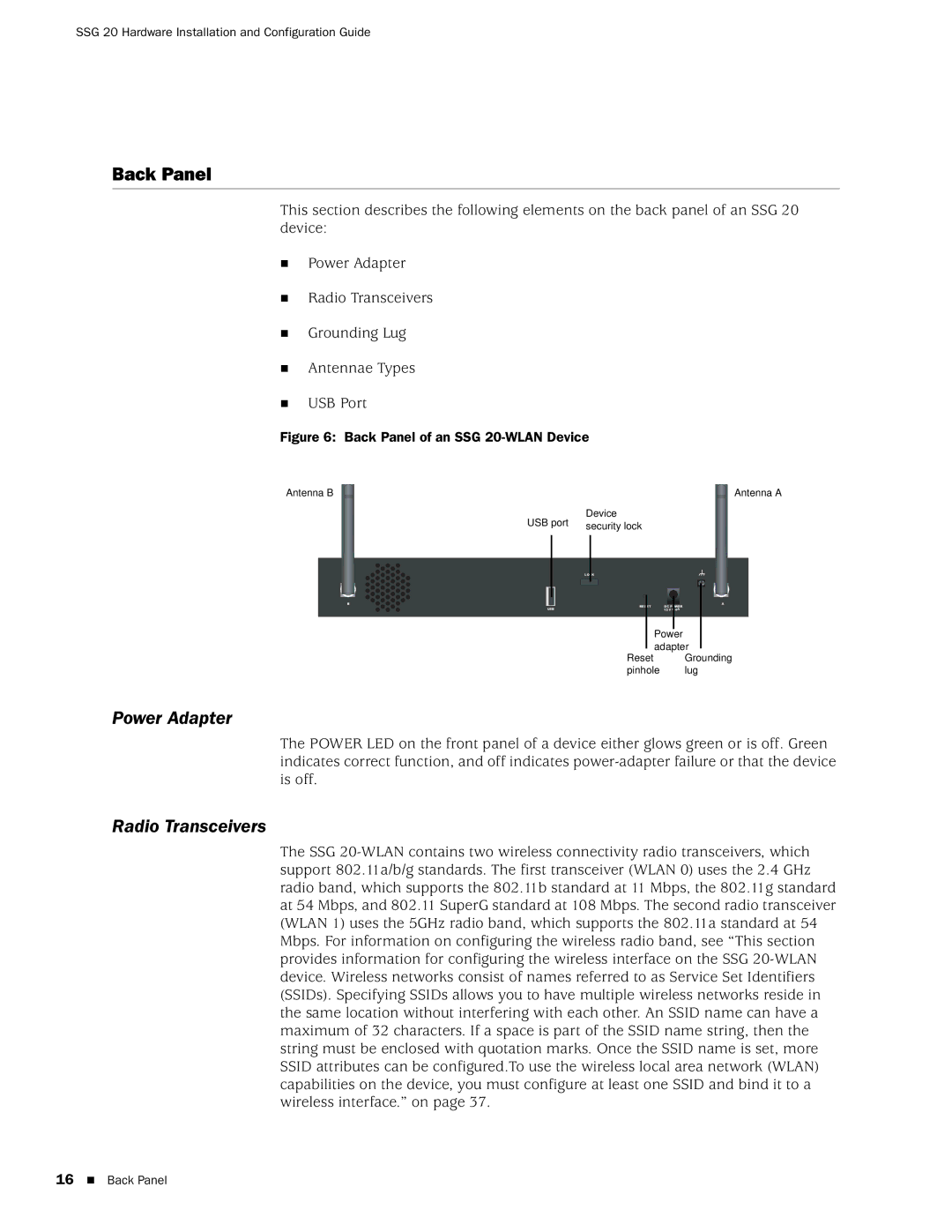
SSG 20 Hardware Installation and Configuration Guide
Back Panel
This section describes the following elements on the back panel of an SSG 20 device:
Power Adapter
Radio Transceivers
Grounding Lug
Antennae Types
USB Port
Figure 6: Back Panel of an SSG 20-WLAN Device
Antenna B | | Antenna A |
USB port | Device | |
security lock | |
| L OCK | |
B | RESET | A |
| DC POWER |
USB | | 12V 4A |
| Power |
| adapter |
| Reset | Grounding |
| pinhole | lug |
Power Adapter
The POWER LED on the front panel of a device either glows green or is off. Green indicates correct function, and off indicates power-adapter failure or that the device is off.
Radio Transceivers
The SSG 20-WLAN contains two wireless connectivity radio transceivers, which support 802.11a/b/g standards. The first transceiver (WLAN 0) uses the 2.4 GHz radio band, which supports the 802.11b standard at 11 Mbps, the 802.11g standard at 54 Mbps, and 802.11 SuperG standard at 108 Mbps. The second radio transceiver (WLAN 1) uses the 5GHz radio band, which supports the 802.11a standard at 54 Mbps. For information on configuring the wireless radio band, see “This section provides information for configuring the wireless interface on the SSG 20-WLAN device. Wireless networks consist of names referred to as Service Set Identifiers (SSIDs). Specifying SSIDs allows you to have multiple wireless networks reside in the same location without interfering with each other. An SSID name can have a maximum of 32 characters. If a space is part of the SSID name string, then the string must be enclosed with quotation marks. Once the SSID name is set, more SSID attributes can be configured.To use the wireless local area network (WLAN) capabilities on the device, you must configure at least one SSID and bind it to a wireless interface.” on page 37.

